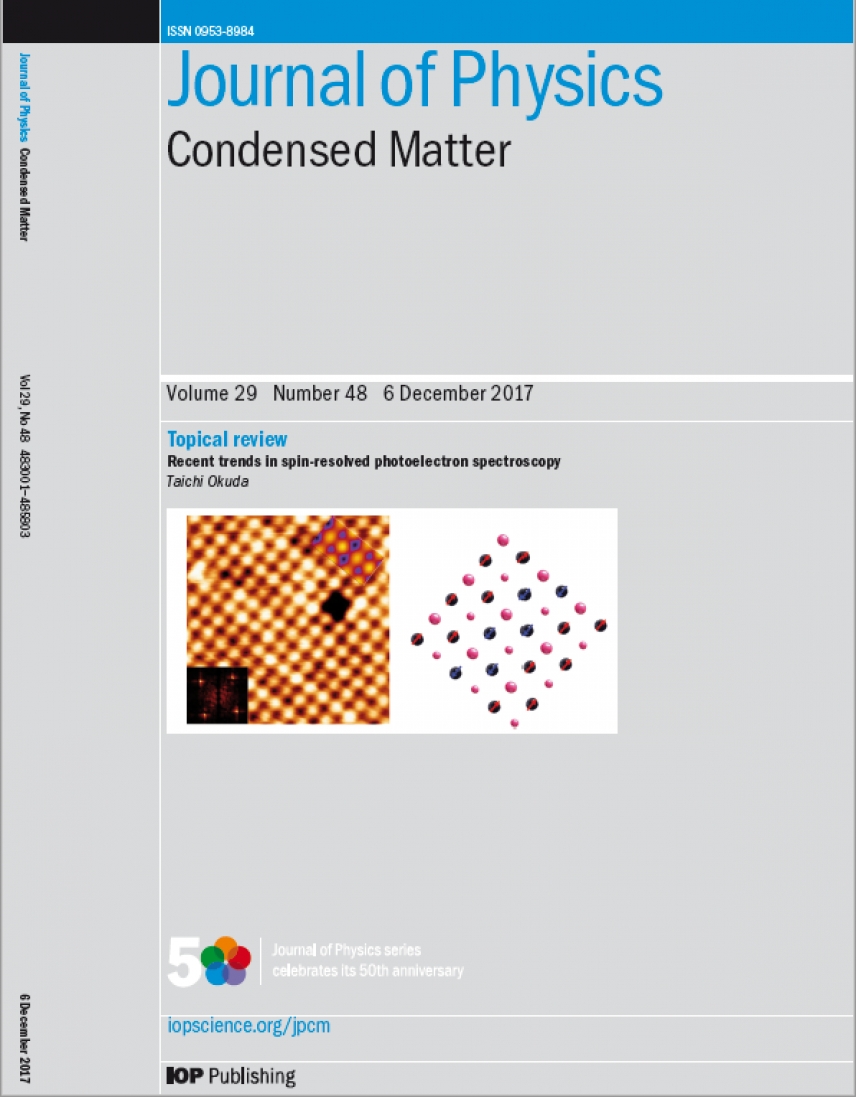The Journal of Physics: Condensed Matter has dedicated the cover of the Volume 29, Number 48 (2017) to the SPIN study entitled: ‘Atomic-scale distortions and temperature-dependent large pseudogap in thin films of the parent iron-chalcogenide superconductor Fe1+yTe’.
Gerbi A. et al., J. Phys.: Condens. Matter 29, 485002 (2017)
The study of the electronic properties at the region near the surface of the non-superconducting parent compounds of iron-based superconductors could improve the understanding of the delicate interplay between different non-superconducting materials sandwiched in a complex heterostructure and contribute to clarify the origin of the two-dimensional superconductivity at interfaces. In this paper, the authors investigated with scanning tunneling microscopy/spectroscopy (STM/STS) and density functional theory calculations (DFT) the surface structures and the electronic properties of Fe1+yTe thin films grown by pulsed laser deposition. Contrary to the regular arrangement of antiferromagnetic nanostripes previously reported on cleaved single-crystal samples, the surface of Fe1+yTe thin films displays a peculiar distribution of spatially inhomogeneous nanostripes. Both STM and DFT calculations show the bias-dependent nature of such features and support the interpretation of spin-polarized tunneling between the FeTe surface and an unintentionally magnetized tip. In addition, the spatial inhomogeneity is interpreted as a purely electronic effect related to changes in hybridization and Fe–Fe bond length driven by local variations in the concentration of excess interstitial Fe cations. Unexpectedly, the surface density of states measured by STS strongly evolves with temperature in close proximity to the antiferromagnetic–paramagnetic first-order transition, and reveals a large pseudogap of 180–250 meV at about 50–65 K. The study suggests that in this temperature range a phase transition takes place, and the system orders and locks into particular combinations of orbitals and spins because of the interplay between excess interstitial magnetic Fe and strongly correlated d-electrons.
